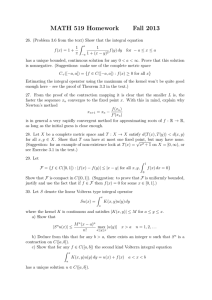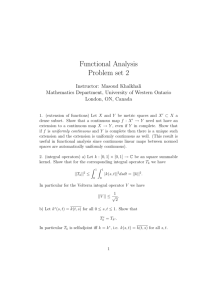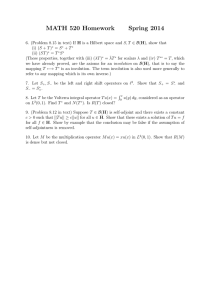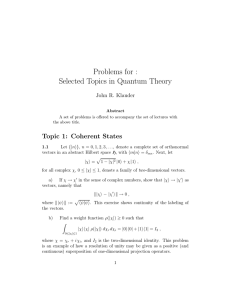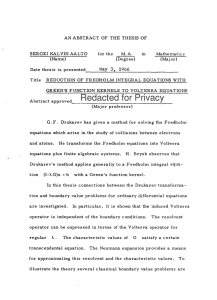MATH 520 Homework Spring 2014
advertisement
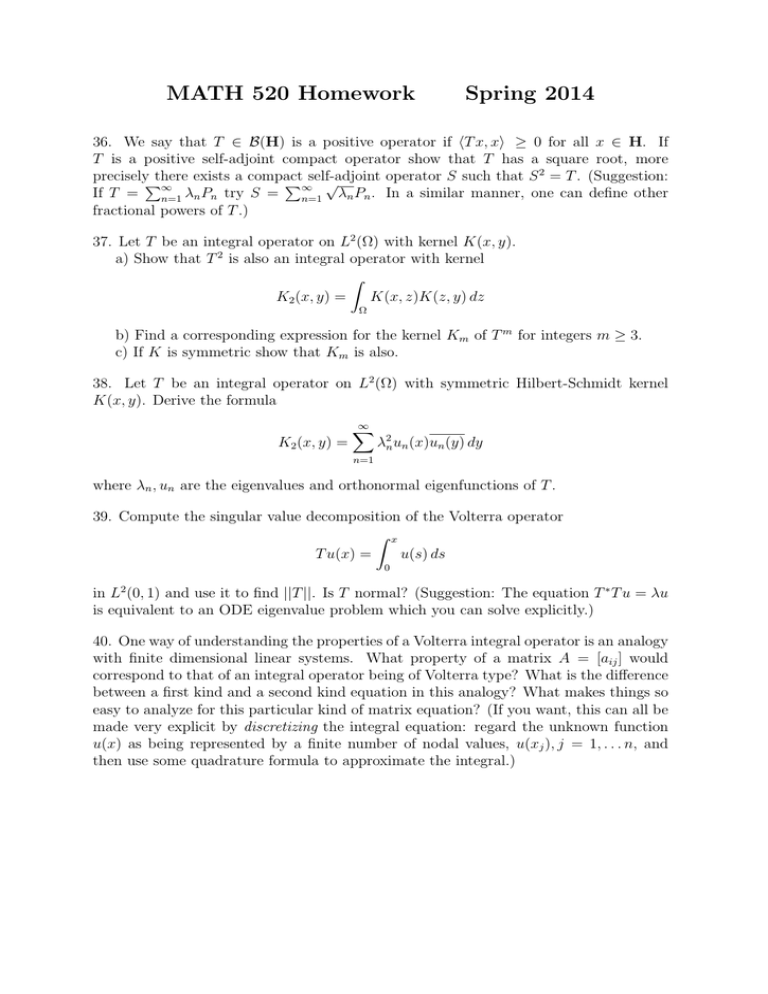
MATH 520 Homework Spring 2014 36. We say that T ∈ B(H) is a positive operator if hT x, xi ≥ 0 for all x ∈ H. If T is a positive self-adjoint compact operator show that T has a square root, more preciselyPthere exists a compact operator S such that S 2 = T . (Suggestion: √ P∞self-adjoint ∞ If T = n=1 λn Pn try S = n=1 λn Pn . In a similar manner, one can define other fractional powers of T .) 37. Let T be an integral operator on L2 (Ω) with kernel K(x, y). a) Show that T 2 is also an integral operator with kernel Z K2 (x, y) = K(x, z)K(z, y) dz Ω b) Find a corresponding expression for the kernel Km of T m for integers m ≥ 3. c) If K is symmetric show that Km is also. 38. Let T be an integral operator on L2 (Ω) with symmetric Hilbert-Schmidt kernel K(x, y). Derive the formula K2 (x, y) = ∞ X λ2n un (x)un (y) dy n=1 where λn , un are the eigenvalues and orthonormal eigenfunctions of T . 39. Compute the singular value decomposition of the Volterra operator Z x T u(x) = u(s) ds 0 in L2 (0, 1) and use it to find ||T ||. Is T normal? (Suggestion: The equation T ∗ T u = λu is equivalent to an ODE eigenvalue problem which you can solve explicitly.) 40. One way of understanding the properties of a Volterra integral operator is an analogy with finite dimensional linear systems. What property of a matrix A = [aij ] would correspond to that of an integral operator being of Volterra type? What is the difference between a first kind and a second kind equation in this analogy? What makes things so easy to analyze for this particular kind of matrix equation? (If you want, this can all be made very explicit by discretizing the integral equation: regard the unknown function u(x) as being represented by a finite number of nodal values, u(xj ), j = 1, . . . n, and then use some quadrature formula to approximate the integral.)
